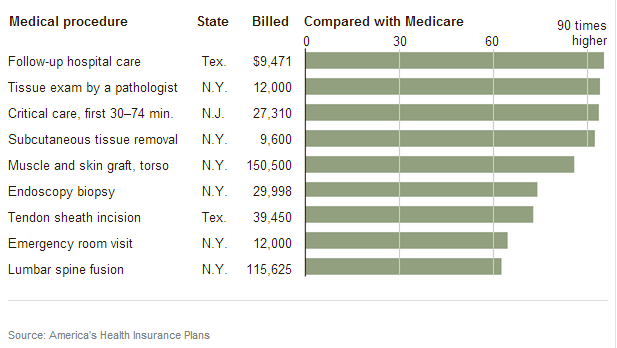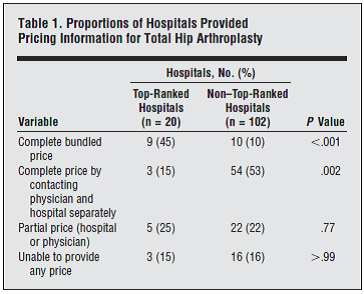As you know from a couple of my earlier posts, I am exploring the ins and outs of price transparency in health care. Here is a nice post by William Pierce in the Huffington Post that pulls together a number of nice links while musing about the complexities of this issue.
Pierce’s post makes mention of one particular article I want to mention now, one from the Washington Post that discusses how price transparency might play out in the market for, of all things, ankle MRIs. It also discusses the role that private companies hope to play in getting consumers better information about both price and quality. The times, they are a changing!
(Click here to view comments)
How Price Transparency Could End Up Increasing Health-Care Costs
 Getting your appendix out can cost between $2,000 and $180,000. Hip replacements run from $10,000 to more than $100,000. Hospitals, we have also learned, frequently mark up the price of cotton swabs and routine X-rays by 300 or 400 percent, with most patients oblivious to the reason their health care bills are so large.
Getting your appendix out can cost between $2,000 and $180,000. Hip replacements run from $10,000 to more than $100,000. Hospitals, we have also learned, frequently mark up the price of cotton swabs and routine X-rays by 300 or 400 percent, with most patients oblivious to the reason their health care bills are so large.
As a response to the hidden variability in health care prices, an increasing number of states have passed price transparency legislation. Federal legislators have even introduced several bills into Congress to make health care prices more transparent. Expect more such bills to follow.
But will health care price transparency help reduce costs? Seems it would. But health-care can be a strange and unique sect of economics. Could price transparency backfire and cause spending to increase?
(Read more and view comments at The Atlantic)
Price Transparency at its WORST
You may have heard this week about a new study, led by my friend and colleague Pete Cram, which revealed astonishing variation in prices for hip replacement surgery. Staggering, actually—ranging from a bit over $10,000 to over $125,000. I have blogged a bit about hospital prices, and doctor fees, even a recent post on orthopedic surgery costs in the US. Now these prices are crazy. And to be fair to the hospitals, these were prices for uninsured patients. And frankly: not many uninsured patients pay for hip replacements.
But some people do not have health insurance. And when that happens, they need to be able to shop for care. And that, in my view, raises the even more troubling aspect of this study. Cram and his colleagues discovered that it was really damn hard for patients (in this case, someone making phone calls asking about this operation) to get price estimates. Look at this table, from the paper:
One Price Does Not Fit All for Medical Fees

Are Insurance Companies the Key to Lower Prices?
 Two patients lie asleep on operating room tables, each with an inflamed appendix demanding to be relocated to a specimen jar. Two operations take place, each one lasting close to fifty minutes, each one performed by an experienced surgeon at a state-of-the-art U.S. hospital. One operation was priced at $1200 dollars. But the other one cost more than $4,000.
Two patients lie asleep on operating room tables, each with an inflamed appendix demanding to be relocated to a specimen jar. Two operations take place, each one lasting close to fifty minutes, each one performed by an experienced surgeon at a state-of-the-art U.S. hospital. One operation was priced at $1200 dollars. But the other one cost more than $4,000.
Why such different prices for such similar procedures? …(Read more and view comments at Forbes)
Should Your Doctor Talk With You About the Cost of Your Pills?
In the last few decades, medical schools have been teaching us doctors to inform patients about their treatment alternatives, so our patients can pick the alternative that best fits with their individual values. Which raises the question: Should doctors take the time to figure out the cost of treatment alternatives and communicate such information to their patients?
(Read the rest and view comments at Critical Decisions)

